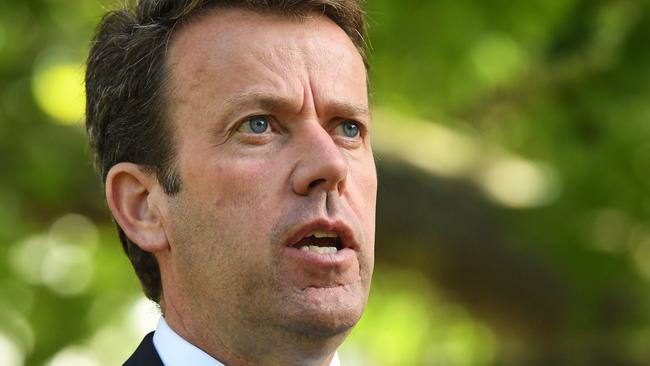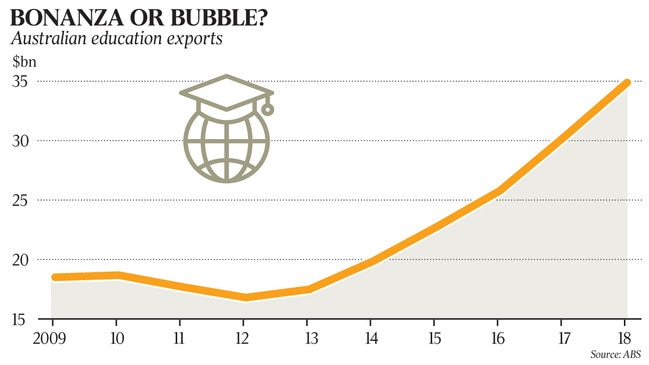Overseas student earnings hit $33bn
Australia’s booming education export sector has continued its rapid growth, hitting a record value of $33.9 billion last year.

Australia’s booming education export sector has continued its rapid growth, hitting a record value of $33.9 billion last year, according to new figures from the Australian Bureau of Statistics.
The value of exports, which includes all spending by international students in Australia, rose 15.3 per cent last year, following on from the 17.3 per cent growth in the previous year.
Federal Education Minister Dan Tehan welcomed the figures yesterday.
“Australia has a vibrant and high-performing international education sector,” he said.
Mr Tehan said Australia was predicted to overtake Britain this year as the world’s second most-popular destination for international students, behind only the US.
While students, particularly from China and India, continue to flock to Australia, demand for British education has been hurt by tighter migration rules and uncertainty over Brexit.
Universities Australia acting chief executive Anne-Marie Lansdown said the growth was in line with the trend of recent years.
“Beyond supporting our economy as our nation’s third-largest export, educating international students plays a powerful role to open doors and build strong ties for Australia in the world,” Ms Lansdown said.

However, International Education Association of Australia chief executive Phil Honeywood sounded a note of caution, saying that more information was needed to properly interpret the latest data because some traditional leading indicators of student demand were not aligned with the high growth figure.
“All the indicators are that enrolments in English language and foundation courses are flat. Some of student enrolment behaviour needs to be better understood to determine where this is headed,” he said.
Mr Honeywood also said the economic benefit of international students was concentrated in Sydney, Melbourne and Brisbane and was patchy in other regions.
Mr Tehan said the government was working to “promote regional Australia as a destination for international students so our regional communities can also enjoy the economic and culture benefits that international students bring”.
Mr Honeywood said there needed to be more policy incentives, such as the extension of post-study work rights visas or extra migration points, to encourage more international students to enrol outside the three major cities.
Mr Tehan said Australia hosted a record 690,000 international students last year. “Over decades of investment, hard work and the commitment of world-class scholars, teachers and administrators, Australia has established a global reputation as a leader in higher education,” he said.




To join the conversation, please log in. Don't have an account? Register
Join the conversation, you are commenting as Logout